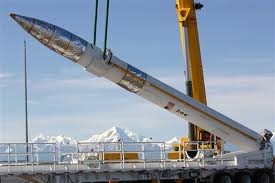A physicist with the Union of Concerned Scientists is calling the Ground Based Midcourse Missile Defense System, less than proven, despite Sunday’s successful test over the Pacific Ocean.

The Ground Based Midcourse Missile Defense System test employed a second generation kill vehicle that had missed its target in two previous tests in 2010. Dr. Laura Grego, who covers defense issues for the Union of Concerned Scientists, says Sunday’s intercept of a dummy enemy missile should be looked at in context.
“You know, I think a lot of people put a lot of work into making this test happen, and they should feel great that it was a success, but it actually doesn’t tell you a whole lot about how capable the system is. And one reason for that is it hasn’t been tested very frequently,” Grego said. “Right now we know it’s one for three, which isn’t great for something that you’d want to count on to defend against nuclear weapons and something that has to work the first time.”
Alaska’s Ft. Greely is the primary staging site for the Ground Based Midcourse Interceptor system. The 26 missiles housed there include a mix of first and second generation kill vehicle technology, that Grego says together have a less than 50 percent success rate in tests, a track record she considers only part of the story.
“Both versions have had upgrades and patches. According to an LA Times investigation, almost all of the interceptors have differences from each other. It’s not clear that knowing that one works will tell you much about how well another one works,” she said.
Grego blames the ground based missile defense system’s less than stellar performance on its rushed deployment, dating back to the Bush Administration.
“That’s why we instituted fly before you buy. This was an experiment in getting rid of fly before you buy and this is the result: not very good,” Grego said.
The Missile Defense Agency had no one to available to answer questions this week, but a spokesman for Ground Based Midcourse Defense contractor Boeing, Terrence Williams says the company is confident in the technology.
“The significance of this test is that it is the first intercept using an enhanced version of the EKV, also called the Exo Atmospheric Kill Vehicle, and we remain confident in the system’s ability to defeat adversaries both now and in the future,” he said.
Williams could not comment on whether or not all system missiles will be upgraded with the latest kill vehicle. The Obama Administration said in March that it would not move forward with the addition of 14 new interceptors at Ft. Greely unless Sunday’s test was successful. There’s been no word since the test on the over $1 billion interceptor build up and other planned system upgrades, but members of Alaska‘s Congressional Delegation heralded the success.
Dan Bross is a reporter at KUAC in Fairbanks.




